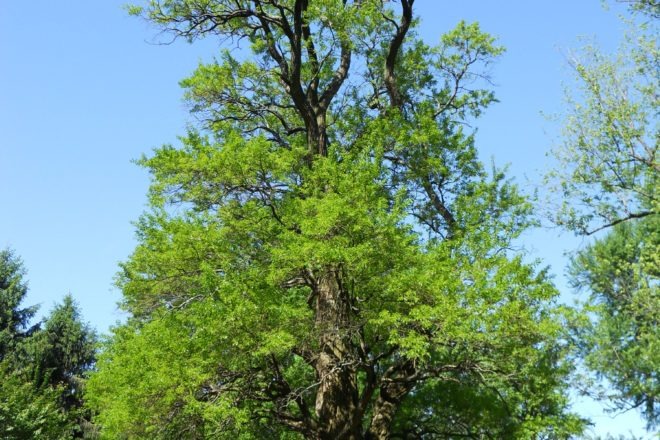Champion Trees are the giants of the tree world, the biggest of the big, the most impressive specimens out there. I recently discovered by talking to Sheryl Heydt, Curator of Horticulture at the Zoo, that at the Zoo you can stand in the shade of several Champion Trees (or could if you knew exactly where to find them, which is what I’m going to tell you.)
Sheryl has five certificates from the Maryland Big Tree program hanging in her office (where she spends very little time, in fact, because she is almost always outside working up a sweat, getting her hands dirty, tending to everything green on the Zoo’s campus.)
The certificates validate the awesomeness of five particular trees at the Zoo: the Osage Orange at Waterfowl Lake Pavilion that has been named a Baltimore City Champion Tree; the White Ash towering above the path that leads away from Chimpanzee Forest that is also a Baltimore City Champion Tree; the Bur Oak in the African Aviary that is both a Baltimore City and Maryland State Champion Tree; a Yellow Poplar near the Oasis restrooms that came in second in point tally for all yellow poplars in Baltimore; and a White Oak near the Animal Embassy that came in third in point tally for all white oaks in Baltimore.
More on point tally now…
How do you officially determine that a tree is a Big Tree, or even better, a Champion Tree? You use a point system developed by Fred Beasley, Maryland’s first State Forester, and later adopted with some modifications nation-wide. That’s what Sheryl told me, and that’s what the Maryland Big Tree program goes by each year to make its lists. Mr. Beasley began keeping records of “notable trees” in Maryland in 1925.
The Beasley formula is as follows: Circumference of Trunk (in inches) + Height of Tree (in feet) + ¼ of the Average Crown Spread (in feet) = Total Points. A tree’s circumference is taken 4.5 feet from the ground unless the tree forks at or below 4.5 feet. The average crown spread (ACS) is the average of two branch tip-to-branch tip measurements through the trunk, taken at right angles to each other. If a tree is suspected of being of champion status, then a recommendation is made to the Maryland Big Tree program to come out and measure it. Once measured, if it ends up with the greatest point tally for its species either locally or state-wide, then it is declared a champion in that category and will remain champion until another tree surpasses it upon official measurement.
Enough on the technicalities, just look at the trees and you will know that you are in the presence of arboreal awesomeness. If nothing else, take a moment to admire the State Champion Bur Oak in the African Aviary next time you are there. State Champion trees are truly remarkable specimens, and this one has a trunk that measures 11.4 feet around and stands about 80 feet tall. That is some tree.






Share this article